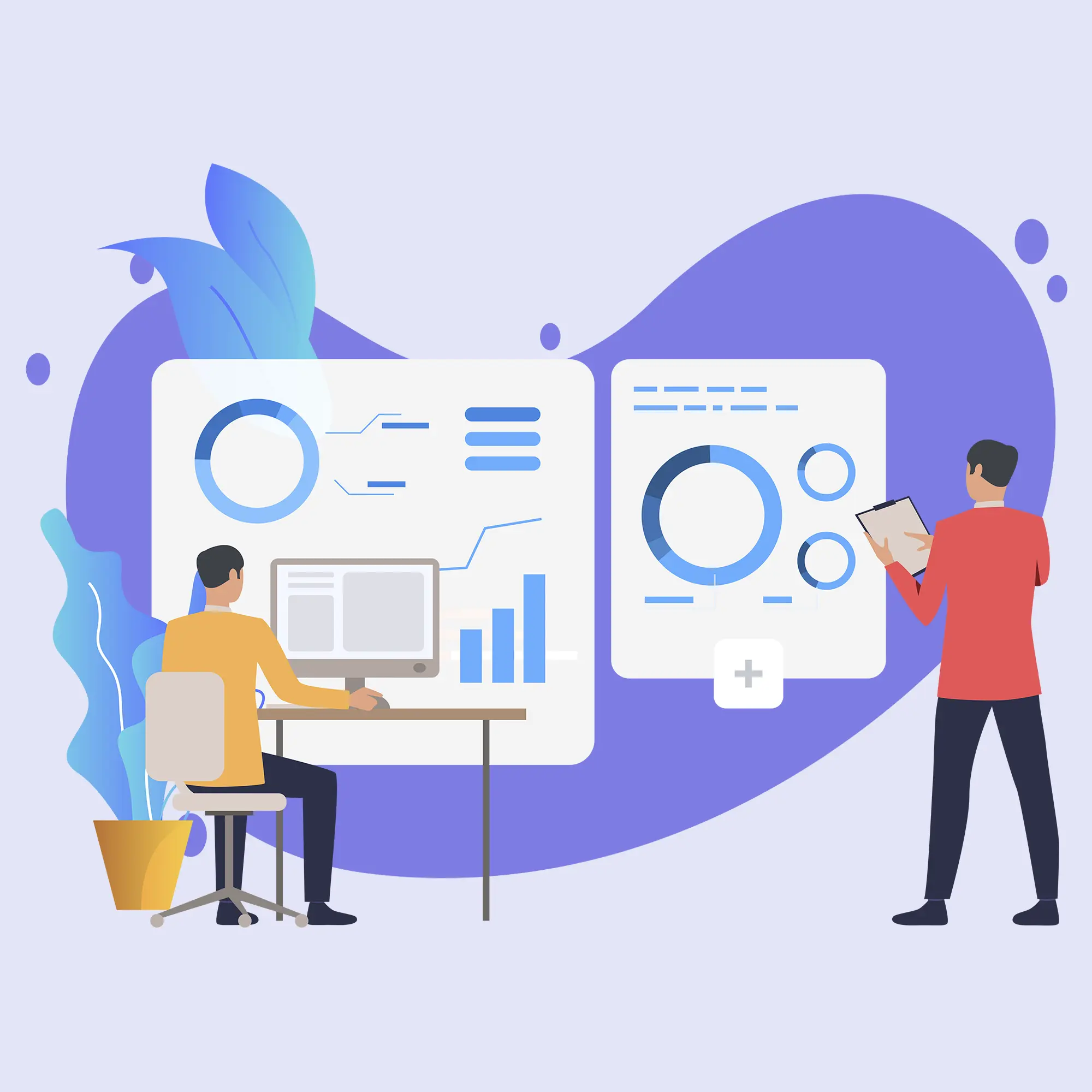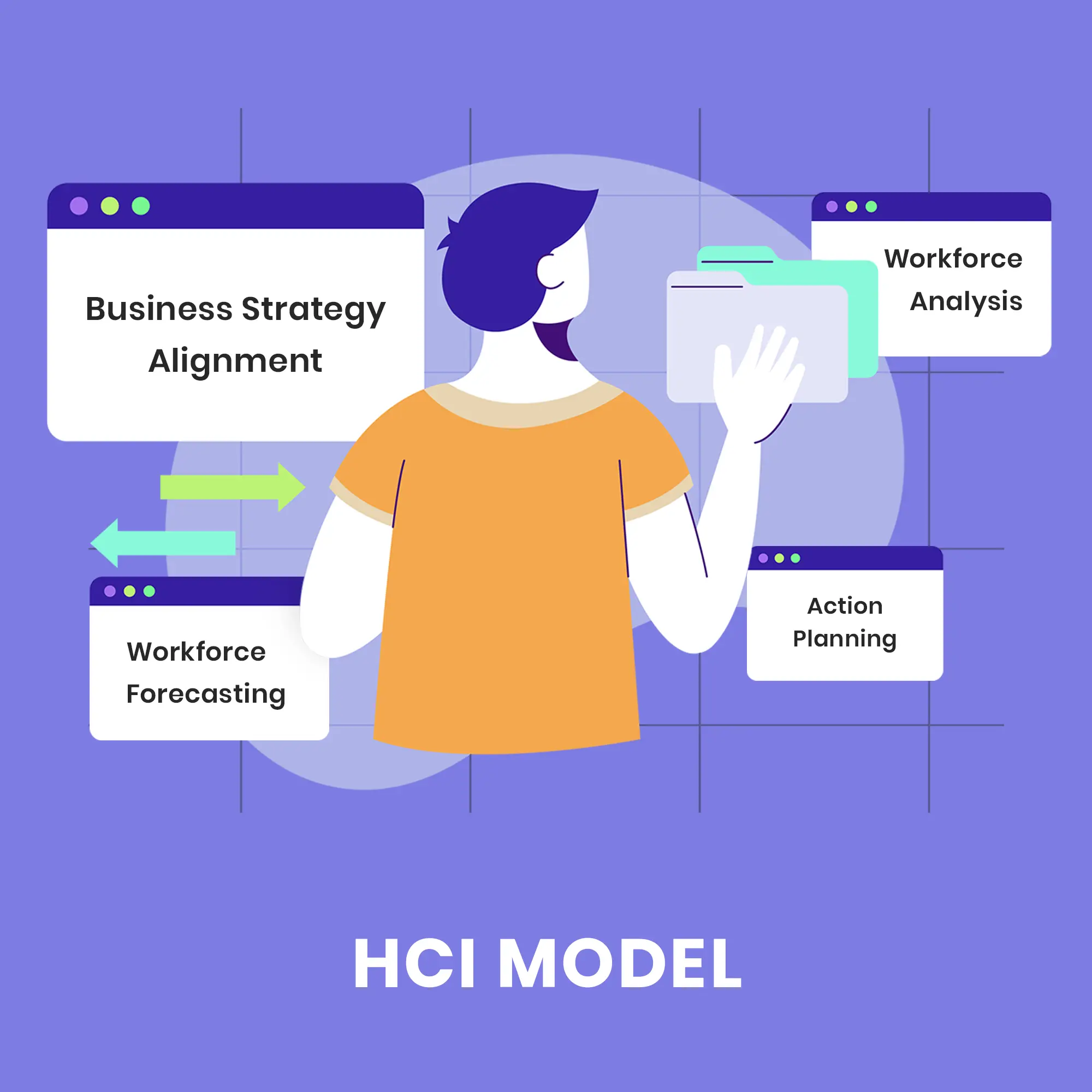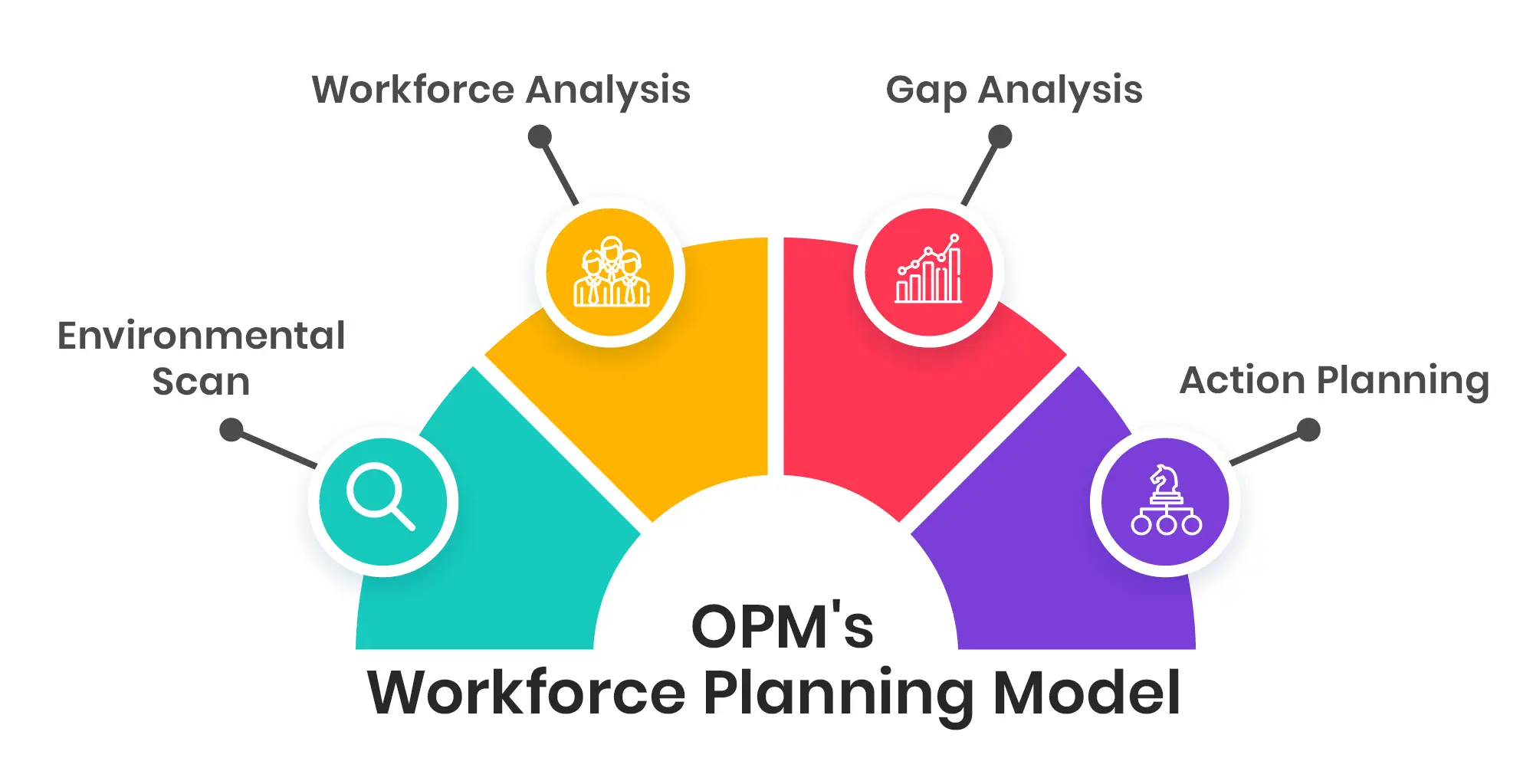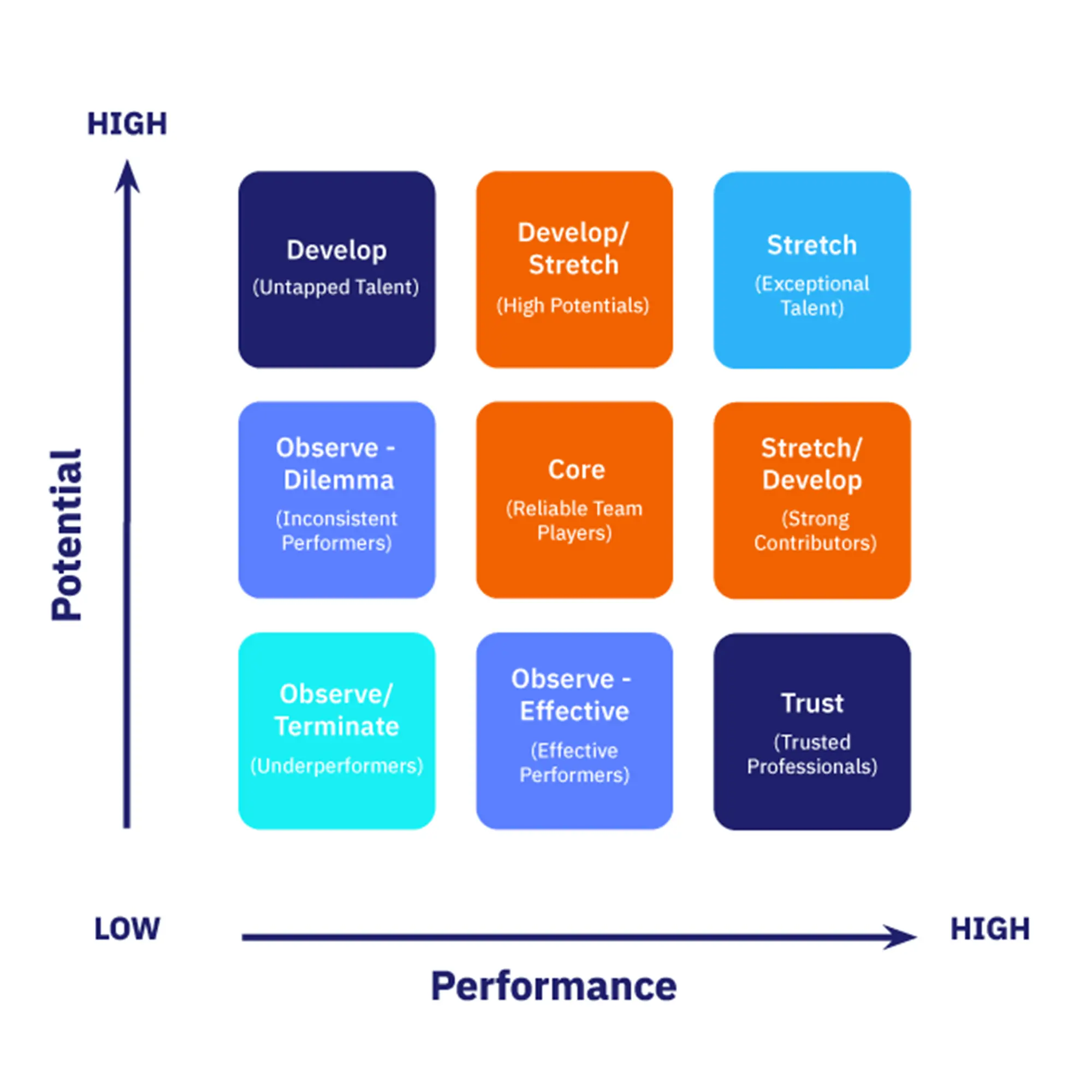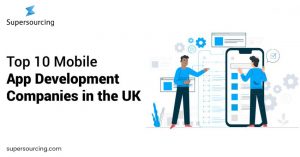Table of content
In today’s fast-paced corporate landscape, businesses are constantly striving for a competitive edge, and that edge lies in strategic workforce planning. But what exactly is it, and why is it so crucial for talent management and organizational growth?This blog will dive deep into the world of strategic workforce planning, uncovering its immense advantages and its impact on talent management and organizational success. From understanding the concept and importance to exploring practical strategies and frameworks, this in-depth guide will equip you with the insights and tools needed to drive your business forward. So, let’s get started and unlock the potential of workforce planning.
What is Strategic Workforce Planning?
Strategic workforce planning is a proactive approach to talent management that aligns HR strategies with business objectives. It involves analyzing the current workforce, anticipating future needs, and implementing strategies to ensure the organization has the right mix of talent to drive success. By taking a strategic approach to workforce planning, businesses can effectively address the challenges posed by an ever-changing business landscape.
Benefits of Strategic Workforce Planning
Strategic workforce planning is a critical process that offers numerous benefits to organizations seeking to optimize their talent management and drive overall growth. By strategically implementing workforce planning, businesses can proactively align their HR strategies with their broader business objectives. Here are some key advantages of embracing strategic workforce planning:
Cost Reduction
It enables organizations to identify inefficiencies and redundancies within their workforce, helping them optimize their staffing levels and reduce unnecessary costs. By aligning the right people with the right roles at the right time, businesses can optimize their workforce utilization and minimize expenses related to underutilized or overstaffed positions.
Flexibility
By analyzing future workforce needs, organizations can anticipate shifts in demand and adapt their workforce accordingly. Strategic workforce planning equips businesses with the agility to respond to market changes, ensuring they have the right mix of talent to support their evolving business priorities. This flexibility ultimately leads to enhanced operational efficiency and competitive advantage.
Collaboration
Strategic workforce planning promotes collaboration across departments and teams within an organization. By involving stakeholders from various functions in the planning process, businesses can ensure alignment and integration of workforce strategies. This collaborative effort leads to enhanced cross-functional communication, cooperation, and the ability to foster a more inclusive and supportive work environment.
Talent Management
Effective workforce planning facilitates comprehensive talent management practices. By identifying skill gaps, businesses can proactively address their talent needs through targeted recruitment, training, and development initiatives. This proactive approach to talent management ensures businesses have the right skills in place to drive innovation and achieve long-term success.
Employee Experience
This approach places a strong emphasis on employee experience, recognizing that engaged and motivated employees are key contributors to organizational success. By aligning workforce strategies with employee expectations and career aspirations, businesses can boost employee satisfaction, retention, and productivity. This, in turn, cultivates a positive work culture and attracts top talent.
The Strategic Workforce Planning Framework
Strategic workforce planning is a vital process that aligns an organization’s human resources strategies with its overarching business objectives. By employing a step-by-step framework, HR leaders can proactively ensure they have the right mix of talent to meet the company’s current and future needs. This section delves into the strategic workforce planning framework, providing insights into each stage of the process.
Analyzing the Current Workforce
The first step in strategic workforce planning involves conducting a comprehensive analysis of the existing workforce. This entails understanding the skills, competencies, and demographics of the current employee base. By evaluating the strengths and weaknesses within the workforce, HR leaders gain valuable insights that inform subsequent planning stages.
Anticipating Future Needs
Effective workforce planning requires a forward-thinking approach. This stage involves headcount forecasting based on the organization’s strategic goals and industry trends. By assessing factors like projected growth, retirement rates, and emerging skill requirements, HR leaders can identify potential talent gaps and develop proactive strategies to address them.
Utilizing Strategic Workforce Planning Tools
Strategic workforce planning is aided by various tools and techniques that facilitate informed decision-making. These tools include the 9 box grid, HR dashboarding, compensation and benefit analysis, and scenario planning. Leveraging data-driven insights, leaders can ensure they have the right talent in the right roles, identify skills gaps, and allocate resources effectively.
Strategic Workforce Planning Models
There are various strategic workforce planning models available that organizations can employ to optimize their talent management and drive organizational growth. Two popular models in this context are the HCI model and OPM’s Workforce Planning Model.
HCI Model
The HCI (Human Capital Institute) model is a comprehensive and strategic approach to workforce planning. It focuses on aligning the workforce with the business needs and objectives. The model consists of several key steps:
Business Strategy Alignment: This step involves understanding the organization’s strategic goals, objectives, and priorities, and aligning the workforce plan accordingly.
Workforce Analysis: Organizations need to analyze their current workforce in terms of skills, capabilities, and potential gaps. This helps identify the areas where additional talent or development efforts are required.
Workforce Forecasting: Based on the analysis, organizations can forecast their future workforce needs to ensure they have the right mix of talent to achieve their business goals.
Action Planning: This step involves developing actionable plans to address any workforce gaps and align talent acquisition, development, and retention strategies with the organization’s overall workforce plan.
The HCI model emphasizes the integration of HR systems, workforce analytics, and strategic decision-making to drive organizational success.
OPM’s Workforce Planning Model
OPM (Office of Personnel Management) developed a workforce planning model specifically tailored for federal agencies. This model also emphasizes aligning workforce strategies with organizational goals and objectives. Key steps in this model include:
Environmental Scan: Federal agencies need to conduct an environmental scan to identify internal and external factors that may impact their workforce. This includes analyzing demographic trends, technology advancements, and legislative changes.
Workforce Analysis: This step involves assessing the agency’s current workforce and identifying gaps in skills, competencies, and diversity. It helps federal agencies understand their current workforce capabilities and areas that require improvement.
Gap Analysis: Based on the workforce analysis, organizations can identify the gaps between the current and desired future workforce. This enables them to develop targeted strategies for recruitment, development, and retention.
Action Planning: Federal agencies can then create action plans to mitigate workforce gaps by implementing strategies such as training programs, succession planning, and diversity initiatives.
Both the HCI model and OPM’s Workforce Planning Model provide organizations with structured frameworks to align their workforce strategies with business objectives. By implementing these models, organizations can make informed decisions, optimize talent management, and drive organizational growth.
Strategic Workforce Planning Tools
To effectively implement strategic workforce planning, organizations can leverage a range of tools and techniques. These tools not only facilitate analysis and decision-making but also enable HR leaders to align talent management strategies with overall business objectives. Here are some essential tools used in strategic workforce planning:
9 Box Grid
The 9 box grid is a popular tool that helps organizations assess and categorize employees based on performance and potential. By plotting individuals’ performance against their potential, HR leaders can identify high-potential employees for future leadership roles and allocate resources accordingly.
HR Dashboarding
HR dashboarding provides a visual representation of key workforce metrics and analytics. This tool allows HR leaders to monitor critical data such as turnover rates, engagement levels, and skill gaps in real-time. With this information at hand, organizations can make data-driven decisions and proactively address workforce challenges.
Incorporating these tools into the strategic workforce planning process enhances decision-making and enables organizations to align talent management strategies with business priorities. By utilizing these tools, HR leaders can foster a dynamic and agile workforce that drives organizational growth and success.
Conclusion
In conclusion, strategic workforce planning offers various benefits such as cost reduction, flexibility, collaboration, talent management, and improved employee experience. By analyzing the current workforce, anticipating future needs, and utilizing strategic workforce planning tools, organizations can make informed decisions about their workforce requirements.


